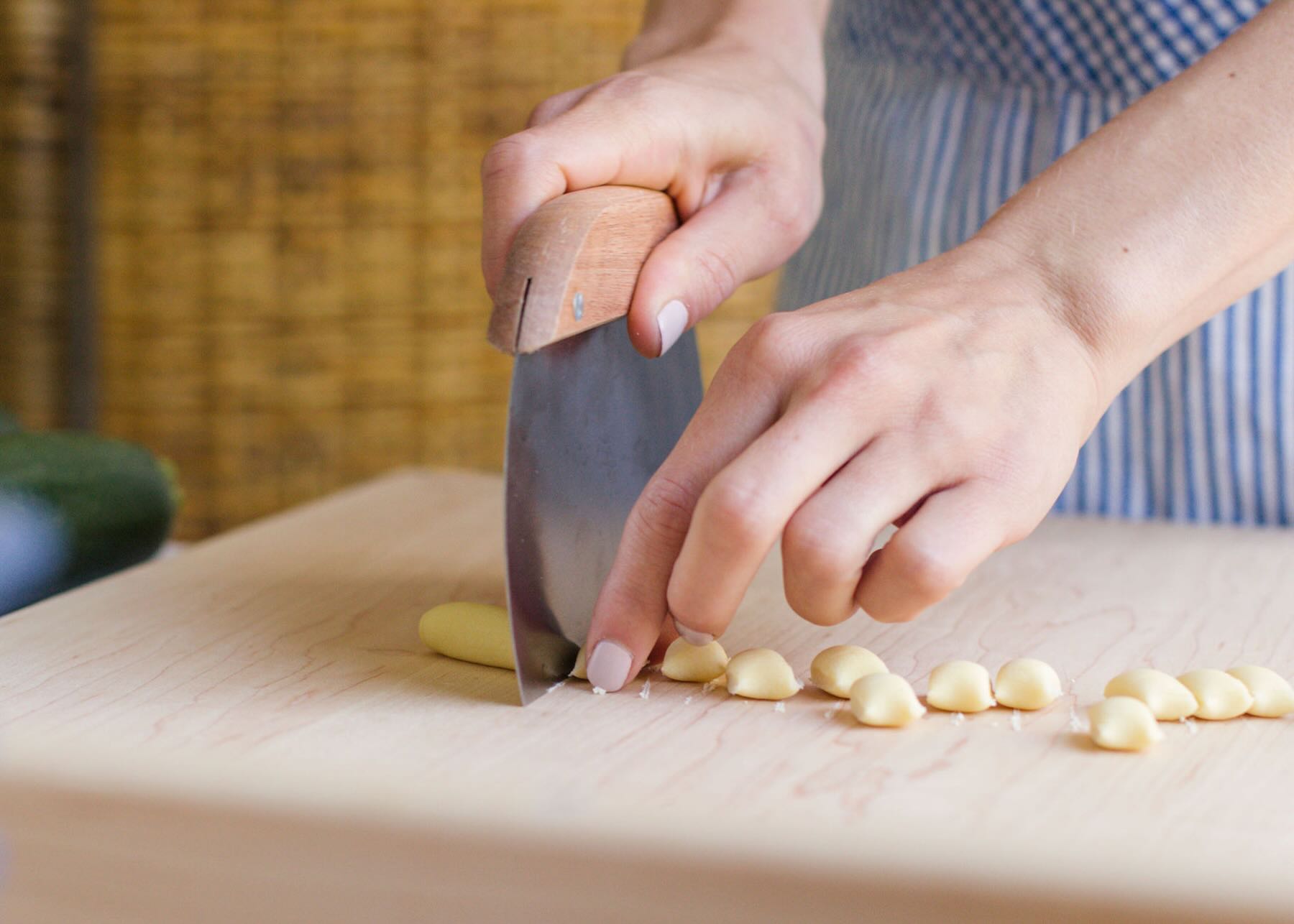I love making pasta by hand. I really do.
But let me be honest with you—there are plenty of nights when it just doesn’t happen. Between chasing my toddler, running q.b. Cucina, and trying to get something (anything) on the dinner table, even boiling water can feel like a small miracle.
And I know I’m not alone. In our Pasta Maker’s Pathway course, so many students shared the same thing: “I want to make pasta more often… but it just feels like too much sometimes.”
And I get it. Homemade pasta can seem intimidating—messy, time-consuming, and hard to fit into real life. But over the years (and through many flour-covered experiments), I’ve picked up a few tricks to make pasta-making feel less like a chore and more like a joy.
Whether you’re a total beginner or just someone looking to fall back in love with the process, here are six ways to make your pasta nights feel lighter, calmer, and more delicious.
1. Your Setup is Your Secret Weapon
I used to think I needed hours of free time and a spotless kitchen to “do pasta right.” But now? I’ve learned to work with what I’ve got—and that starts with a smart setup.
Before I crack an egg or measure out my flour, I clear a small workspace and gather just what I need: flour, a bowl, a bench scraper, pasta tools for the shape I’m making, and a tray for resting the finished pasta. If I’m really feeling fancy, I might light a candle, play some Italian music, or pour a glass of wine. Even five minutes of prep can set the tone for a calmer experience. (And yes, I’ve definitely done this while wearing a baby carrier. It counts.)
2. Let the Dough Lead
One of the biggest sources of pasta-making stress? Overthinking.
I used to worry about exact measurements and minute-by-minute timers. But pasta dough isn’t a math problem—it’s a conversation. You don’t have to get it perfect on the first go.
Measure out your ingredients, sure. But more importantly, listen to your dough. Feel it. Touch it. If it’s too dry, add a touch of water. If it’s too wet, dust in more flour. Rest it when it’s tight. Roll it when it’s soft.
The more you tune in to the dough itself, the less you stress about the recipe—and the more naturally things begin to flow. Check out our pasta troubleshoot guide if you're unsure about what to do.
3. Start Simple: Pick One Basic Shape and Stick With It
There are hundreds of pasta shapes out there, but that doesn’t mean you need to learn them all at once.
If you’re new—or just feeling overwhelmed—start with one. And better yet, start with one that’s simple and forgiving. Tortellini may look beautiful, but it’s a time-intensive project. Instead, reach for simple pasta shapes like cavatelli, tagliatelle, pappardelle, malloreddus, gnocchi, maltagliati, or agnolotti. These are all satisfying to shape and don’t require hours of precision.
A good rule of thumb? The bigger the shape, the more bang for your buck. Large ravioli take less time to assemble than a hundred tiny ones. Giant farfalle go faster than miniature bows. Plus, when you batch the process—rolling, cutting, and shaping in stages—you’ll not only save time, but you’ll also build a rhythm that makes the whole experience feel more relaxed and doable.
The more you repeat a shape, the more confident you become. And the more confident you become, the more joyful pasta-making at home gets.
4. Lower the Stakes (and Expectations)
Here’s a little secret: even “ugly” pasta tastes amazing.
I’ve made noodles that looked like sea creatures, ravioli that leaked, and farfalle that could pass for abstract art. But the joy wasn’t in the precision—it was in the process. The way my hands moved. The way my son tried to name every noodle. The way we laughed at our floury fingerprints on the fridge door.
Don’t wait until you’ve “perfected” it to serve it. Cook what you make. Eat what you make. Celebrate the fact that you made it.
5. Pace Yourself: Parcel Out the Pasta Process
One of the biggest mindset shifts I’ve made around homemade pasta is this: you don’t have to do it all at once.
In fact, breaking up the process is not only okay—it’s smart. It’s also how professional chefs and restaurant kitchens operate.
You can make pasta dough ahead of time—say, in the morning before the day gets hectic—then roll it out during your kid’s nap or later after work. You can shape a batch of gnocchi on Saturday, freeze them, and forget about them until a cozy Wednesday night calls for a quick boil and butter-sage situation. You can even make certain pasta sauces ahead of time and let it hang out in the fridge or freezer until you're ready to serve.
6. Make it a Ritual, Not a Race
Pasta night doesn’t have to be a once-a-year event or a special occasion dinner. It can be a quiet Tuesday habit. A Sunday nap-time project. A once-a-month “batch and freeze” session so future-you can have a break.
I keep prepared shapes in the freezer, sauce ingredients in the pantry, and pasta flour always at the ready. But more than anything, I try to keep a mindset of practice over performance. Some weeks I don’t make pasta at all. Some weeks I make it three times. It’s not about perfection. It’s about presence and progress.
If you’ve been craving more handmade pasta in your life but haven’t known where to begin, start here. Pick a shape. Clear a corner of your kitchen. Let it be imperfect. Let it be fun!
And if you need inspiration, Italian cooking tips, or the best pasta-making tools, the q.b. Cucina team is always here cheering you on. Flour-covered hands and all.

